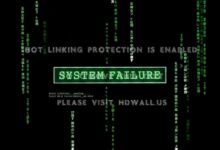System Backup: 7 Ultimate Strategies for Total Data Protection
In today’s digital world, losing critical data can be catastrophic. A solid system backup strategy isn’t just smart—it’s essential for survival.
What Is System Backup and Why It Matters

At its core, a system backup is the process of copying and archiving computer data so it can be restored in the event of data loss. This loss might stem from hardware failure, software corruption, cyberattacks like ransomware, or even human error. The goal of any system backup is to ensure business continuity, data integrity, and peace of mind.
Think of it as an insurance policy for your digital life. Whether you’re an individual user with personal photos or a multinational corporation managing petabytes of customer data, the principles remain the same: protect, preserve, and recover. According to a Veritas IT Resilience Report, 82% of organizations experienced at least one data outage in the past year, with downtime costing up to $500,000 per hour for some enterprises.
Types of Data at Risk
Not all data is created equal. Understanding what you’re protecting helps determine the right system backup approach. Common types include:
- Operating System Files: Critical for booting and running your machine.
- Application Data: Settings, databases, and configurations for software like CRM or ERP systems.
- User Files: Documents, emails, spreadsheets, photos, and videos.
- System State Data: Registry entries, boot files, and Active Directory information in enterprise environments.
“Data is the new oil, but unlike oil, it doesn’t run out. However, it can be lost forever if not backed up properly.” — Clive Humby, Mathematician and Data Science Pioneer
Common Causes of Data Loss
Understanding the threats helps build a resilient system backup plan. Major causes include:
- Hardware Failure: Hard drives fail. SSDs degrade. RAID arrays aren’t foolproof.
- Malware and Ransomware: Cybercriminals encrypt your data and demand payment for decryption.
- Human Error: Accidental deletion, formatting, or overwriting files is surprisingly common.
- Natural Disasters: Fires, floods, and earthquakes can destroy physical infrastructure.
- Software Corruption: Bugs, failed updates, or incompatible patches can render systems unusable.
With so many risks, relying on a single storage device or location is a gamble. A robust system backup strategy mitigates these dangers through redundancy, automation, and verification.
The Evolution of System Backup Over Time
System backup hasn’t always been as sophisticated as it is today. From punch cards to cloud storage, the journey reflects broader technological advancements. Understanding this evolution helps contextualize current best practices and anticipate future trends.
In the 1960s and 70s, backups were done using magnetic tapes and punch cards—primitive by today’s standards. These methods were slow, prone to physical degradation, and offered limited capacity. Fast forward to the 1990s, and floppy disks gave way to CD-ROMs and external hard drives, enabling faster and larger backups. The 2000s introduced network-attached storage (NAS) and storage area networks (SAN), allowing centralized backup solutions for businesses.
Rise of Cloud-Based System Backup
The real game-changer came with the advent of cloud computing. Services like Amazon Web Services Backup, Microsoft Azure Backup, and Google Cloud Backup revolutionized how organizations approach data protection. Cloud-based system backup offers:
- Scalability: Pay only for the storage you use.
- Accessibility: Restore data from anywhere with an internet connection.
- Automatic Updates: No need to manage physical media or firmware.
- Geographic Redundancy: Data replicated across multiple regions for disaster recovery.
This shift has democratized enterprise-grade backup solutions, making them accessible to small businesses and individuals alike.
Modern Innovations in Backup Technology
Today’s system backup tools leverage advanced technologies to improve efficiency and reliability:
- Deduplication: Eliminates redundant data blocks, reducing storage needs by up to 90%.
- Incremental Forever Backups: Only new or changed data is saved after the initial full backup, minimizing bandwidth and time.
- AI-Powered Monitoring: Predictive analytics identify potential failures before they occur.
- Blockchain for Integrity: Emerging solutions use blockchain to verify backup authenticity and prevent tampering.
These innovations are not just incremental improvements—they represent a fundamental shift in how we think about data resilience.
Types of System Backup: Full, Incremental, and Differential
Not all system backup methods are the same. Choosing the right type depends on your recovery time objectives (RTO), recovery point objectives (RPO), available bandwidth, and storage capacity. Let’s explore the three primary types: full, incremental, and differential backups.
Each method has its strengths and trade-offs. A well-designed system backup strategy often combines multiple types to balance speed, storage efficiency, and recovery simplicity.
Full System Backup: The Foundation
A full system backup copies every file and folder on a system, including the operating system, applications, and user data. It’s the most comprehensive method and serves as the baseline for other backup types.
Advantages include:
- Fastest recovery time since all data is in one place.
- Simple to manage and verify.
- Essential for initial backups or major system changes.
However, full backups are resource-intensive. They require significant storage space and time to complete, making them impractical for daily use. Most organizations perform full backups weekly or monthly, supplemented by more frequent incremental or differential backups.
Incremental System Backup: Efficiency Focused
An incremental system backup only saves data that has changed since the last backup—whether that was a full or another incremental backup. This makes it extremely efficient in terms of storage and time.
For example:
- Monday: Full backup (100 GB)
- Tuesday: Incremental (1 GB of changes)
- Wednesday: Incremental (500 MB)
- Thursday: Incremental (2 GB)
The downside? Recovery requires the last full backup plus every subsequent incremental backup. If one link in the chain is corrupted, the entire restore process fails. This complexity increases the risk of human error during recovery.
Differential System Backup: The Middle Ground
Differential backups save all changes made since the last full backup. Unlike incremental backups, they don’t reset after each backup.
Using the same example:
- Monday: Full backup (100 GB)
- Tuesday: Differential (1 GB)
- Wednesday: Differential (1.5 GB total since Monday)
- Thursday: Differential (3.5 GB total since Monday)
Recovery only requires the full backup and the most recent differential, making it faster and more reliable than incremental. However, differential backups grow larger over time and consume more storage than incremental ones.
Many enterprises use a hybrid approach: a full backup weekly, differentials daily, and incrementals hourly for critical systems.
Best Practices for an Effective System Backup Strategy
Having a backup is better than nothing—but having a poorly designed one can give a false sense of security. To ensure your system backup actually works when needed, follow these proven best practices.
These guidelines apply to individuals, small businesses, and large organizations alike. The key is consistency, testing, and alignment with your actual recovery needs.
Follow the 3-2-1 Rule
The 3-2-1 backup rule is a gold standard in data protection:
- 3 copies of your data (original + 2 backups)
- 2 different media types (e.g., external drive + cloud)
- 1 offsite copy (to protect against local disasters)
This rule minimizes single points of failure. For example, if your office burns down, your offsite cloud backup ensures business continuity. If your cloud provider suffers an outage, your local NAS can keep operations running.
“I’ve had clients lose everything because they backed up to a single external drive—then left it plugged in. When ransomware hit, it encrypted both the computer and the backup.” — John Smith, IT Consultant
Automate Your System Backup
Manual backups are unreliable. People forget. Schedules slip. Automation eliminates human error and ensures consistency.
Most modern backup tools—like Vembu, Acronis, or Windows Backup—allow you to schedule backups daily, hourly, or even continuously. Set it and forget it.
Key automation features to look for:
- Scheduled backups (daily, weekly, etc.)
- Event-triggered backups (e.g., after software updates)
- Email or SMS notifications for success/failure
- Pre- and post-backup scripts (e.g., pause applications before backup)
Automation also enables compliance with regulatory requirements like GDPR, HIPAA, or PCI-DSS, which mandate regular data protection audits.
Regularly Test Your Restore Process
Backups are only as good as your ability to restore them. Too many organizations discover their backups are corrupt—or missing critical files—only during an actual crisis.
Best practice: conduct a restore test at least quarterly. This includes:
- Restoring individual files
- Full system recovery in a sandbox environment
- Verifying data integrity and application functionality
Document the process and train your team. A smooth recovery under pressure starts with preparation.
Top Tools and Software for System Backup in 2024
Choosing the right tool is crucial for an effective system backup strategy. The market offers a wide range of solutions—from free utilities to enterprise-grade platforms. Here’s a breakdown of the top contenders based on features, reliability, and user feedback.
When evaluating tools, consider compatibility, ease of use, encryption, support for multiple backup types, and scalability.
Acronis Cyber Protect: All-in-One Security and Backup
Acronis combines backup, disaster recovery, and cybersecurity into a single platform. It’s ideal for businesses that want integrated protection against ransomware and other threats.
Key features:
- Image-based system backup (full disk or partition)
- AI-driven anomaly detection
- Hybrid cloud support (local + cloud)
- Mobile and desktop coverage
Acronis uses blockchain technology to verify backup integrity, ensuring files haven’t been tampered with. It’s more expensive than basic tools but offers unmatched protection for high-risk environments.
Veeam Backup & Replication: Enterprise Powerhouse
Veeam is a leader in enterprise backup, especially for virtualized environments (VMware, Hyper-V). It’s known for its speed, scalability, and granular recovery options.
Strengths include:
- Instant VM recovery
- Backup copy jobs for offsite replication
- Long-term retention and archival
- Strong integration with cloud providers
Veeam’s free version supports up to 10 workloads, making it accessible for small businesses. However, advanced features require licensing, which can be costly for large deployments.
Free and Open-Source Options: Duplicati and Macrium Reflect
For budget-conscious users, free tools can still deliver powerful system backup capabilities.
Duplicati: An open-source tool that supports encrypted, incremental backups to cloud storage (Google Drive, Dropbox, etc.). It’s cross-platform and highly configurable.
Macrium Reflect Free: Offers disk imaging and cloning for Windows. While the free version lacks scheduling, it’s excellent for one-time full backups.
These tools are great for individuals or small teams but may lack centralized management and advanced reporting features.
Cloud vs. Local System Backup: Pros and Cons
One of the biggest decisions in any system backup strategy is where to store your data. The two main options are local (on-premises) and cloud (offsite). Each has distinct advantages and limitations.
The best approach often involves a hybrid model—combining both for maximum resilience.
Local System Backup: Speed and Control
Local backups are stored on physical devices within your control, such as external hard drives, NAS devices, or tape libraries.
Advantages:
- Fast backup and restore speeds (no internet dependency)
- Lower long-term costs (no recurring subscription fees)
- Full control over data security and access
- Offline protection from cyber threats
However, local backups are vulnerable to physical damage, theft, and localized disasters. They also require manual rotation and maintenance.
Cloud System Backup: Accessibility and Scalability
Cloud backups store data on remote servers managed by third-party providers like Backblaze, Carbonite, or AWS.
Benefits include:
- Automatic offsite storage
- Unlimited scalability
- Disaster recovery readiness
- Global access for remote teams
But there are downsides: ongoing subscription costs, slower restore times (depending on bandwidth), and reliance on the provider’s uptime and security practices.
For example, restoring 1 TB of data over a 100 Mbps connection could take over 24 hours—time you may not have during a crisis.
Hybrid Backup: The Best of Both Worlds
A hybrid system backup strategy uses both local and cloud storage. For instance, you might back up to a NAS daily and replicate that data to the cloud weekly.
This approach offers:
- Fast local recovery for minor incidents
- Offsite protection for major disasters
- Cost efficiency by tiering storage
- Flexibility in recovery options
Tools like Synology Hyper Backup or CrashPlan support hybrid workflows out of the box, making implementation straightforward.
Disaster Recovery and Business Continuity Planning
A system backup is just one component of a broader disaster recovery (DR) and business continuity (BC) plan. While backup focuses on data, DR/BC ensures the entire organization can resume operations after an outage.
According to IBM’s Resilience Report, companies with a formal DR plan recover 60% faster than those without.
Defining RTO and RPO
Two critical metrics guide any system backup and recovery strategy:
- Recovery Time Objective (RTO): How quickly must systems be restored? (e.g., 4 hours)
- Recovery Point Objective (RPO): How much data loss is acceptable? (e.g., 15 minutes of data)
For a financial trading platform, RTO might be minutes and RPO near zero. For a blog, a few hours may be acceptable. Your system backup frequency and method should align with these goals.
Creating a Disaster Recovery Plan
A DR plan should include:
- Inventory of critical systems and data
- Step-by-step recovery procedures
- Contact list for IT staff and vendors
- Designated recovery sites (physical or virtual)
- Regular testing and drills
Without a plan, even the best system backup can fail under pressure. Chaos leads to mistakes, delays, and extended downtime.
Integrating System Backup into Business Continuity
Business continuity goes beyond IT. It includes workforce availability, supply chain resilience, and customer communication.
Your system backup supports BC by ensuring:
- Employee access to critical files
- Continuity of customer-facing applications
- Compliance with legal and regulatory obligations
- Reputation protection through rapid response
For example, a hospital’s system backup ensures patient records remain accessible during a power outage, directly impacting care delivery and legal compliance.
What is the best system backup method for small businesses?
A hybrid approach using local NAS and cloud backup is ideal for most small businesses. It balances cost, speed, and offsite protection. Tools like Veeam or Acronis offer scalable solutions tailored to SMB needs.
How often should I perform a system backup?
It depends on your RPO. For most businesses, daily backups are standard. Critical systems may require hourly or continuous backups. Individuals should back up at least weekly, especially after major changes.
Can ransomware infect my backups?
Yes, if backups are connected to the infected system. To prevent this, use air-gapped backups (disconnected after backup), immutable storage (can’t be altered), or versioning to roll back to clean copies.
What is the 3-2-1-1-0 rule?
An evolution of the 3-2-1 rule, it adds: 1 offline (air-gapped) copy and 0 errors verified through regular testing. This enhances protection against cyber threats and ensures backup reliability.
Is cloud backup safer than local backup?
Neither is inherently safer. Cloud offers offsite protection but depends on provider security. Local gives control but is vulnerable to physical threats. A combination of both is safest.
In today’s data-driven world, a robust system backup strategy is non-negotiable. Whether you’re protecting personal memories or enterprise operations, the principles remain the same: automate, diversify, and verify. By understanding the types of backups, leveraging modern tools, and integrating backups into a broader disaster recovery plan, you can ensure resilience against any threat. Don’t wait for a crisis to realize the value of your data—start building your system backup strategy today.
Further Reading:








